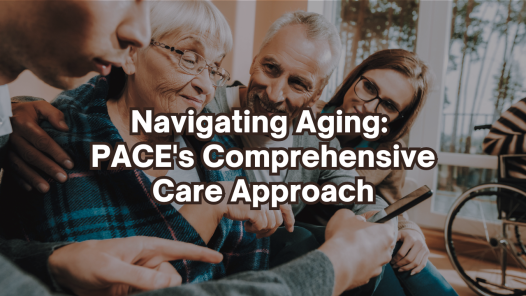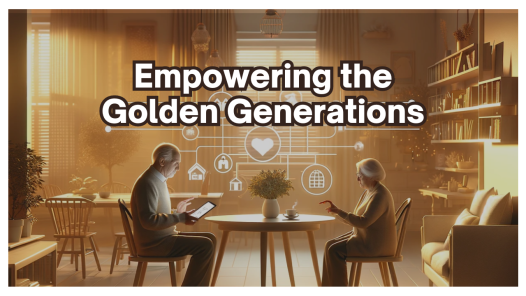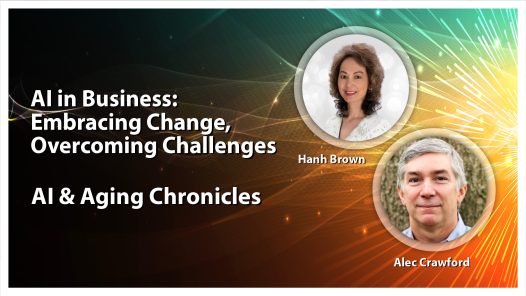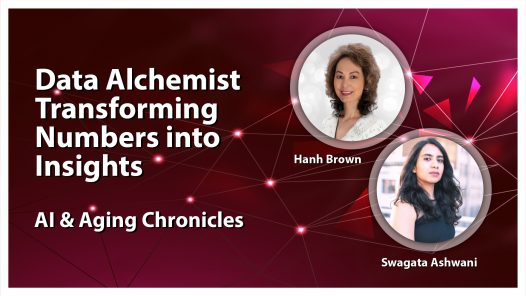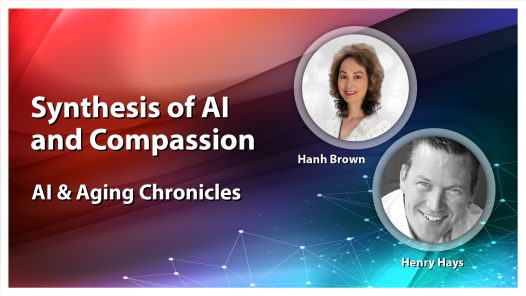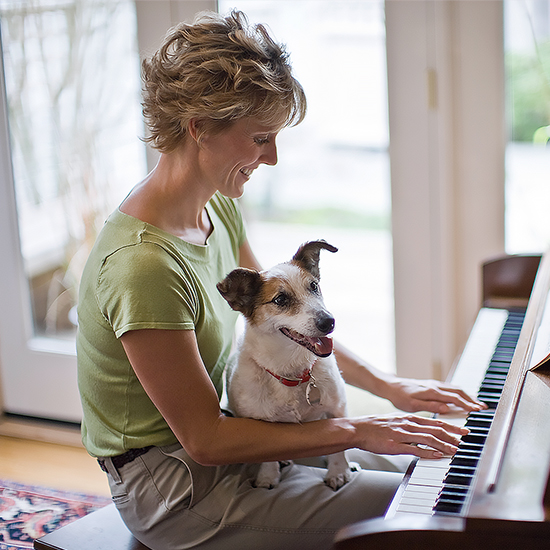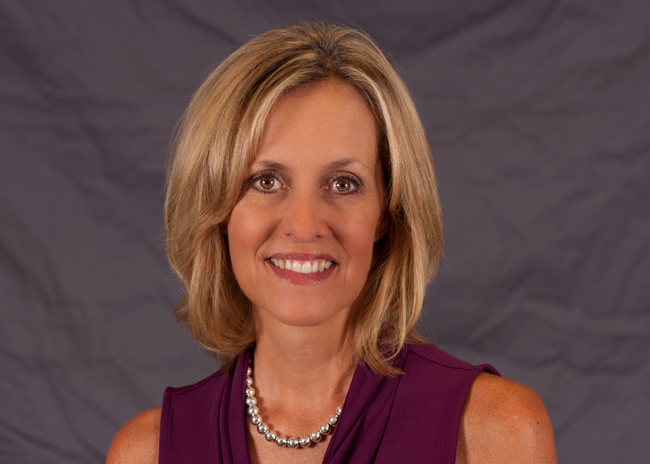
Susan Ryan, Senior Director of The Green House Project, is a leader in the strategic development of innovative thinking and cultural paradigm shifts. With international speaking and project management experience, she has served as an integral part of The Green House Project for over 12 years and has led the team through key transitions. In the quest for quality long-term care environments that are accessible and affordable to all, Susan has sought to leverage lessons learned from research conducted on the Green House model to develop protocols and metrics to ensure growth and sustainability.
A social entrepreneur with a passion for improving quality of life for elders and those working closest to them, she offers a unique combination of skills in Nursing, Gerontology, Alzheimer’s and Dementia, and strategic marketing.
Susan has a background in nursing, with over 30 years of experience serving elders in a variety of settings across the continuum of care. She has been featured as a speaker many times at LeadingAge, The Pioneer Network and other high-profile conferences.
Topics Discussed:
- Describe the Green House Project and how it differs from a traditional nursing home?
- How have the Green House homes fared during the pandemic?
- Where are Green House homes located?
- Do Green House homes support people living with dementia, and if so, what makes their approach different from others?
- Why did you choose to have affordability the main tenet of the Green House Project?
- What are some of these biggest challenges you’ve had to lead the Green House Project through during your 12+ years with the Project?
- How have Green House homes fared during the pandemic?
- What lessons has the Green House Project learned from the pandemic that you will carry with you into a post-COVID world?
Susan’s LinkedIn Profile: https://www.linkedin.com/in/susanryan2018/
Transcript:
Hanh: 1:12
Today, my guest is Susan Ryan. She is the senior director of “The Green House Project”, a cultural paradigm shift in the senior living industry. She’s been with the project for 12 years and has led the team through some big transitions. So I’m really excited to talk to her today on Boomer Living about how she is shaking up the senior living industry, and Susan, thank you so much for being with me today. so let’s get started. I wanted to know, how you got here. What are you working on? Can you share with us your journey?
Susan: 1:44
My journey is actually as a nurse. And I had my call to action moment when I was the director of nursing and long-term care. And I. it was way back in the day when we actually tied people up to keep them from falling. And I knew in my heart that this just couldn’t be right. And so I then embarked on a home care career and I did everything I could to keep people out of nursing homes because I thought they were just not the dignified, respectable places where people were known and treated really in humane ways. But in my quest to keep people in their own homes, I discovered that home care is wonderful, but it can be cost prohibitive or socially isolating. And so it was, then I went back into long-term care in 2001 and it was with the idea we’ve got to reform. Long-term care. And I really was embarking on that journey. I heard about the Green House model in 2005 and traveled to Tupelo, Mississippi to see the first Green House homes. And honestly, when I walked in, I felt like it was my two worlds that had just come together in a beautiful way. And it was three years later that I joined the Green House project. Team. And I have been there ever since and have just really felt like I’m, I don’t know, I’ve been created to do this and have really, I brought that nursing background as well as those experiences, both in home care and longterm care, but certainly a passion for elders and really wanting to make sure that they are treated with the dignity and respect they deserve.
Hanh: 3:32
Thank you. what a journey, what a story. I appreciate the fact that. your realm of work has always been serving older adults and you found your passion. So that’s awesome. Now, can you please describe the Green House project and how they differ from the traditional nursing home?
Susan: 3:51
Absolutely. So I think when you think the traditional nursing home. You are likely to envision a bit of an institution. And the Green House model is really about de institutionalizing the physical space so that we’re creating a real home and a real home is home to 10 or 12 people, and they have all private rooms. With their own private bathroom. it’s a de-centralized kitchen so that the kitchen is right there in their real home where they’ve got 24 seven access to food and they’re able to get up when they want, they’re able to live life with kind of. Autonomously. And they’re able to experience a meaningful life, a life that’s purposeful, and to do the things that are meaningful or important to them surrounded by an empowered staff. And that is a care team that is really there to support each person to live his or her. the life that’s meaningful to them.
Hanh: 4:52
very much needed, we talk about purpose and vibrancy and contribution. I believe we all want that at any age. whether your twenties, thirties, eighties, and nineties, where we all want to have a sense of contribution that we have something to wake up to. It’s no different. If you’re 80 or 90,
Susan: 5:11
No, that’s, it’s not gonna change. No, in fact, I’d say the older I get, the more important it is that my days are filled with those events, those activities, just the simple pleasures that are important to me.
Hanh: 5:27
I agree. So now where are the Green House project homes located? Is it like a national effort in, are you scaling it slowly and intentionally?
Susan: 5:39
So we would love to scale more rapidly. currently there are 300 homes that have opened in 32 States and we’ve got probably another four or five States that have homes in development. But I believe that this is the model. And I think probably everybody in light of the pandemic has been made acutely aware that 40,000, excuse me, 40% of all deaths have occurred. Us deaths have occurred in nursing homes or long-term care. And so I would argue in Green House homes have done far better during COVID than their traditional counterparts. I would argue that this is a model made for the moment and is really made for the future. And I think you said it that kind of our shared humanity, we all want the same things. It’s not, when you’re young, you want this when you’re old, you want that. But essentially we want choice and essentially we want privacy. We want dignity. We want to live a life that’s meaningful and purposeful. And that’s what the Green House model is. Really all about. And I believe again, it is a model that we’d love to scale, especially in response to what we’ve seen in the pandemic. We know we can do better. And I think the Green House model offers a better way.
Hanh: 6:59
Do the Green House Project homes support people let’s say with dementia and other disabilities. And I guess what makes their care approach different from traditional dementia care models?
Susan: 7:10
I’d say yes. The short answer is yes. That obviously we’ve discovered that. I think nationally, you could probably say 60, 70% of those in long-term care environments are living with mild to severe cognitive impairment. And when we did some research in Green House homes, I think it was in 2009 or 10, we discovered 85% of those in Green House homes were living with dementia. And What makes dementia care really meaningful, important and good dementia care. And it’s when you are deeply known as an individual, when you are seen as an individual first above your diagnosis, but in those small environments where you’ve got consistent staffing, who are in deep knowing relationships with the people who’ve lived there. That’s how you support people living with dementia, by understanding who they are as an individual, not as them, but as a real person who has unique individual needs and to really be able to support them and know them and to help them have. A meaningful day to better understand what that behavior might be trying to communicate to us. It’s a form of expression of something that is there that would be important to understand that happens when you’ve got consistent staff that have been educated and empowered to be in those deep knowing relationships.
Hanh: 8:39
Consistency perhaps you don’t have the same problem is the turnover as the your counterparts. And I think the key, what you mean. Describe is that it’s personalized, individual focus as opposed to disease focus or even a demographic focus. Because although we may, our health is declining and we are at different place in. Dementia decline, different place. Some could be early and some could be in a later state, but regardless it’s individualized and you treat the folks where they are at the moment and not just group them into everybody that has dementia,
Susan: 9:18
that’s exactly right. And I think, and I have learned even as a nurse more more broadly that it’s important that we see people as individuals and even one person with diabetes. It’s one person with diabetes and whilst they may share certain characteristics with others, you really need to understand what’s going on and treat that person in a holistic sort of way. And I always call it’s whole person approaches and really understanding who that person is. And I think the other thing that’s important is to understand the intrinsic worth. With a person and that doesn’t diminish as their cognition might change over the years. So you don’t become less than of a person. if you’ve developed dementia, you are still. A person of value and a person that has intrinsic worth. And that’s an important belief that has to undergird anything that we do with regards to good dementia care. It’s understanding the worth of the individual and understanding that person as an individual.
Hanh: 10:24
amen to that. I see that to be always where the person is in the moment and not trying to correct them where they once were or what they were able to do at one time, Is where they are now and the future. So I find it very critical. To be a part of that journey where you tell them the person that, what you remember them to be, but be a part of that storytelling and appreciate all the moments that you shared and also create a story for them for the future and be a part of that journey and not reminding them something that they’re not anymore. Do you know what I mean?
Susan: 11:07
Oh I totally know what you mean. And I think it’s so important to just be fully present in the moment and to celebrate those moments and to, truly try to seek to under stand and be with them where they are. And I think what’s been so nice about Green House homes is. Having the privacy, having that autonomy and a bit of control, less bells and whistles, you walk into a traditional nursing home and you’ll, there are so many lights and sounds and stimulation. I think in a Green House home, it is so visually appealing and calming. And I think the opportunity to be able to get outside and to share meals together at a family table, as opposed to tables here and there and the dining room it’s everybody sits at a family table and there’s something that’s so familiar about that. So soothing about that. And I think the other thing that’s so nice is that the rooms are decorated. With pictures and things that are important to that person. And I think one of my favorite things is to go visit in a Green House home pre pandemic, obviously, but to be able to go in and to really even somebody living. With some rather significant dementia, but just to look at the history that’s represented in the room and to be able to even talk about it and to be able to tap into some of those memories that are still there.
Hanh: 12:36
I agree. So now why did you choose to have affordability be a main tenant of the Green House project?
Susan: 12:45
I think the reality is that when someone has financial resources, they have more options. They can. Pretty much pick and choose because they’ve got the wherewithal to either bring services into their own home or they’re able to pay for whatever it might be. That would be important to them. And I think it’s important as a society that we’ve really not just create a model. for the people that have the wherewithal to pay for it, but that we need to create something that fits within the traditional regulatory and reimbursement structures that we have. And so it does work and we’ve got I would say roughly about 45% of those living in Green House homes are supported by Medicaid. and in the skilled nursing five things, and we’re about 82% are licensed as skilled nursing across the country. And that’s important to me. I just think that. it’s something that we have to think about as we go into the future. And as a society, I think we need to put our money where our mouth is and make sure that reimbursement is structured in such a way that it really will support people to have dignified environments.
Hanh: 14:00
Amen. just what you described, it’s wonderful. If you have the financial means. To choose. you’re going to have a lot of options, but just because you have less options, does that mean that you’re less of value or you have to choose the bad ones. Okay.
Susan: 14:16
I’ll have to just tell a real quick story. Remember I was attending the grand opening for a Green House. Some that was opening. For veterans and I’ll never forget it ribbon cutting. There is a 104 year old veteran who was being wheeled into his home and he just had tears running down his face and he said, I. Never thought that I could ever live in something as nice as this. And it gave me such a good feeling to see what we were able to do as a society, to really enable someone who had served his country so well, but to be able to be in an environment that was really honoring him, respecting him. And at the very tail end of his life, he was able to experience something so beautiful and so wonderful and so appropriate to meeting his needs.
Hanh: 15:12
That’s a blessing. Okay. So what are some of the biggest changes you’ve had to lead the Green House project? through the, during the last 12 years?
Susan: 15:23
I think the last 12 years, and probably the most significant changes been through the pandemic. we’ll start with what everybody sees right now. This pandemic has impacted, I would say literally everyone who’s living in this world right now across the globe. I can’t talk to anybody around the world without having some reference to what we’re all experiencing right now. So I would say the Green House model, what does that mean? And how has the pandemic created an increased opportunity to really. Reimagine the nursing home and to think about what we can do to really make sure that Green House becomes something that is more broadly available to people across the country. And potentially across the globe. we’ve done some work in Israel. We’ve done some work in Canada and we’ve had some conversations in Australia. And so it’s pretty exciting to think about where the impact of something that’s working well in the States could have global impact. We. Decided early in the pandemic that we wanted to really capture our data. I felt in my heart that this model was made for the moment, but would it really stand the test of this incredible devastating virus? And we would. Really need to use data to best tell our story. And so we’ve done that. And so we’re in the final phases of really getting some research hopefully published that will talk about the story that has occurred by our data and how Green House homes have fared. Compared to their traditional counterparts. I think, even before that, I would say that there was much that we did to really ensure that Green House homes were not just on a senior living community. But let’s think about the segregation that can often occur within a senior living community. What does it look like to have Green House sums embedded into a community? And so working through some of the regulatory barriers and so forth to get Green House homes into a community has been something that we had homes opened in outside Rochester, New York, and. Two beautiful homes embedded into a community and looking at their neighbors. You wouldn’t know which is the Green House then, which is the neighbor’s home and how, what a sense of normalcy has occurred. and that fabric of really understanding our shared humanity and being in community together. And I think when we keep segregate gating people of a certain age in certain communities, It can perpetuate a stigma and age of stereotypes that I think are important for us to address and recognize that aging is a part of life. And it’s just a part of being human and we experience different things at different parts, childhood, adulthood, elderhood different parts during our life. But I think, challenging some of those stigmas and stereotypes and keep. Pushing forward to help us think more multi-generationally and to think more about how we really de-stigmatize and even go further and addressing our shared humanity and what we all need as a society.
Hanh: 18:56
Yeah. Wow. Wow. Thank you. Wow. I couldn’t have said that better myself. you said humanity. that is so true. And I keep going back regardless of where you are in life, Thirties, forties, eighties, and nineties. It’s about humanity. It’s not what the older adults want or the aging population. It really isn’t. so we don’t need to even group or categorize them as if they’re somehow unique that there are no longer have value, but they still want purpose. I don’t follow the logic because it’s what we all want, And here’s the other thing too. Our society, I don’t know where it went wrong, perhaps we just, so Hollywood focus and we proceed the the older adults is something frowned upon aging is frowned upon and everything is anti-aging, and I hear people talk about it and I do too. And you do too, but I really think it’s important that we all take ownership and responsibility to be part of this shift. And that we ought to start talking about that. I am an older adult. I am a young baby boomer and I’m aging and I’m wise. And I have a lot to share to my kids who are in their twenties, So I think, I love what you’re doing. One of the reasons behind the women living podcast is to have folks like yourself bring to light. that aging is beautiful. Sure. There are challenges that come with aging, but that doesn’t end. With those challenges, right? You don’t die from dementia. You still are very alive from dementia. And now there is a, perhaps a dying state with. I see people still living with dementia 10, 15 plus years. So let’s focus on those 10, 15 years of liveliness and be where they are. So I love what you’re doing. I’m a full advocate for it. I think it’s really important that every single one who, who are working in caring for older adults to just speak up that you are aging. I am too, and it’s a beautiful thing.
Susan: 20:57
And that’s okay. It is a beautiful thing. And I still appreciated what you said, the wisdom that you are acquiring. As you age and your opportunity to give back. And I think that’s the other thing that’s so important to what we do is the reciprocity that it’s not just, we care for them, but they’ve got a lot to give back to us as well. And it’s recognizing that a reciprocal relationship and the opportunity to give and receive. And that’s important to all of us. And yeah I feel I resonate so much with the things that you just said as well, and our shared humanity for sure.
Hanh: 21:37
Now what lessons has the Green House project? Learn from the pandemic that you will carry with you into the post COVID world.
Susan: 21:45
I think when it was important to do, when we went on lockdown and went family visitation was Stopped and everybody was, sequester to their rooms if you will. I think what Green House learned is that it’s time to exercise some real creativity and it’s time to tie it to what we’ve been talking about, tapping into the wisdom and resilience of elders and to really understand what. What we’re able to learn from them and the experiences that they’ve had over time and how we can really involve them in decision-making. And for example, we had a corn Q instead of a barbecue. It’s we can still get outside and we can still barbecue and do some things that bring. Normalcy even during a pandemic. And so it’s really, once again, really bringing that important voice into the decision-making process and really allowing them to exercise some of their autonomy and their control and their creativity. And so I think, that’s, that was an important lesson learned for us is that. This is what we can do, and let’s not do that. Knee jerk kind of respond to what we’re told. This is what you must do to keep everybody safe and that pendulum swing to surplus safety. But to not that we don’t want to keep people safe, but to really think about it again, more broadly and creatively and bring elders into the conversation.
Hanh: 23:24
Yeah. Yeah. Wow. I wholeheartedly believe that. at any age, people want to have ownership. They want to have a sense of independence to make decisions, to be asked. What is it that they want to do? you and I want that in our older adult, our parents are no different. Yeah. Yeah. So do you have anything else that you would like to share?
Susan: 23:47
I’m thankful that you’re raising the voice among boomers, and I even love the name of your podcast that it’s Boomer Living. And I think that focus on living and living is not age dependent. It should not be age dependent, no matter the age, let’s focus on living and let’s get busy living. And let’s, even, when you referenced dying and aging certainly does. aging is a reality. I’m not who I was when I was 20 years younger, but that having been said There are still opportunities to learn and to grow and to do things. And let’s seize every day, whether it’s me or whether it’s those that are living in Green House homes. So I think, again, let’s focus on living and what we can do instead of, reacting and thinking what we can’t do that. but just keep pushing against that status quo that says good enough. No, it’s not good enough. Let’s keep pushing it forward.
Hanh: 24:48
thank you. Thank you so much. I, I really appreciate this opportunity, my gosh. And I’m so glad that we, connected on social media.
Susan: 24:55
Absolutely thankful for that.
Hanh: 24:58
All right. thank you again.
Susan: 24:59
Thank you. Yeah, it was a pleasure to meet you.
Hanh: 25:02
Yeah. And have a wonderful rest of the year.
Susan: 25:05
You too, we don’t have much left and I’m looking forward to starting 2021 for sure.





